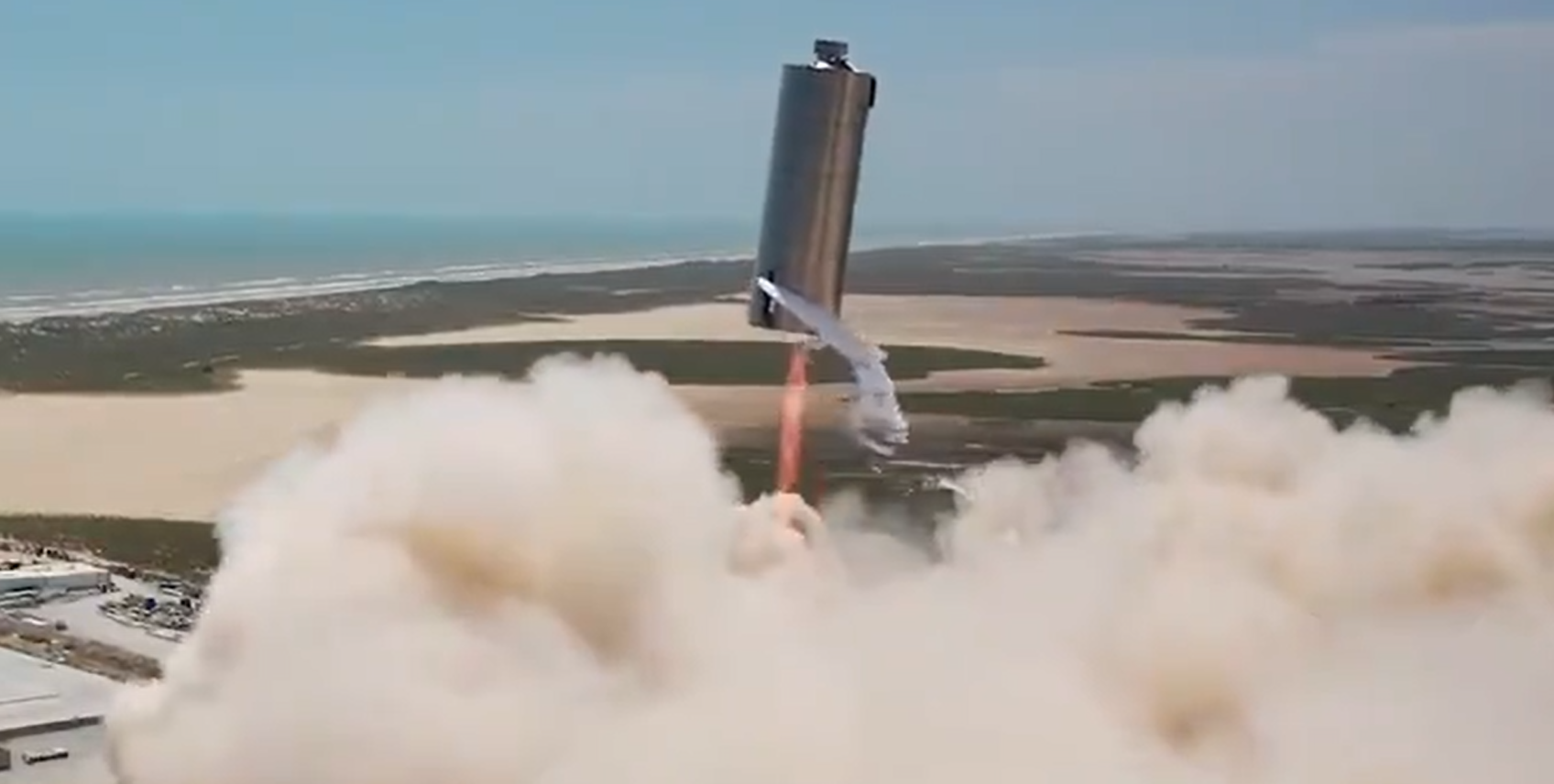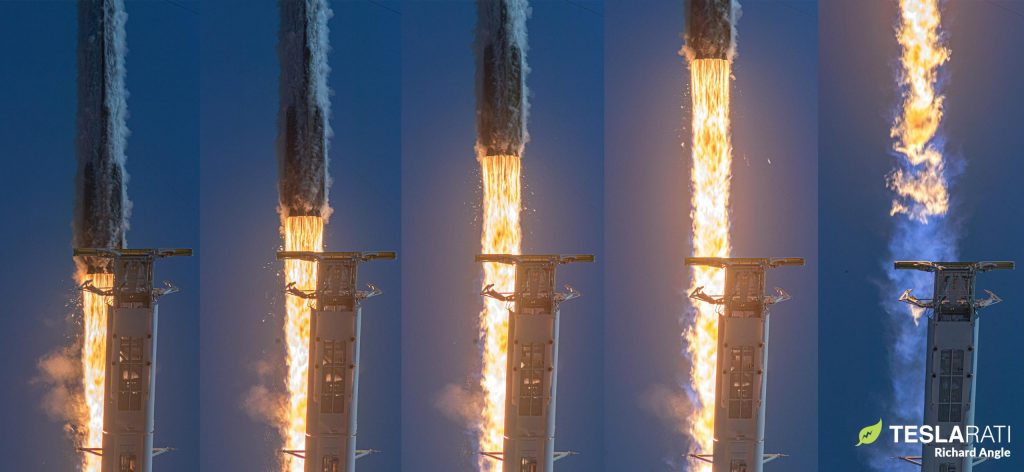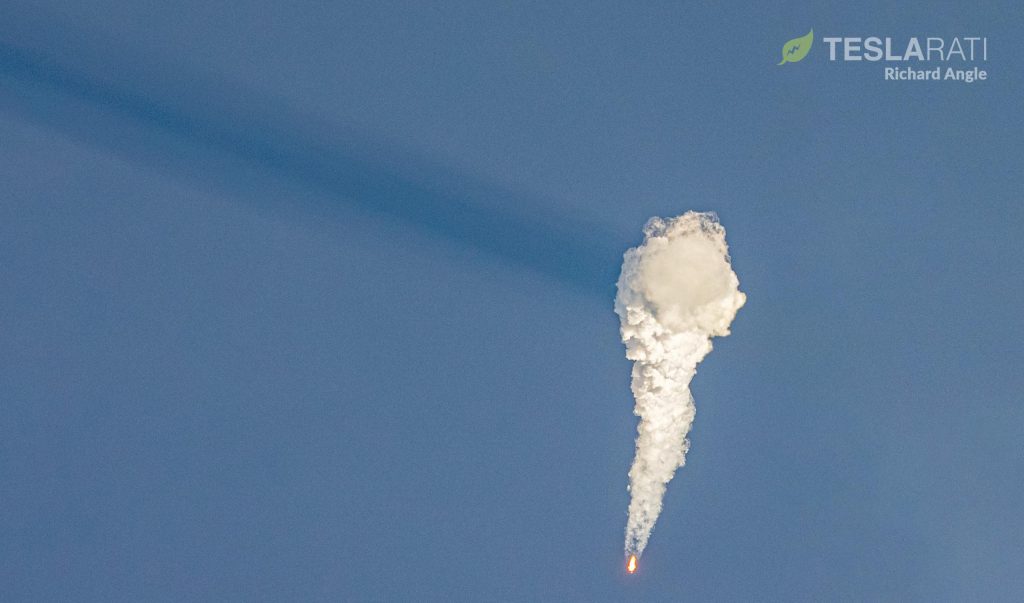

News
SpaceX soars with flawless Starship hop, Starlink launch five hours apart
SpaceX has successfully launched a Falcon 9 rocket with 60 Starlink satellites and hopped a Starship prototype just five hours apart.
Right on schedule, Falcon 9 booster B1060 brought several days of delays to a welcome end, lifting off from Kennedy Space Center Launch Complex 39A (Pad 39A) at 8:48 am EDT (UTC-4). Nine minutes later, B1060 landed aboard drone ship Of Course I Still Love You and the mission’s expendable Falcon 9 upper stage shut off its Merlin Vacuum (MVac) engine after reaching a nominal orbit. Less than 20 minutes after liftoff, all 60 Starlink v1.0 spacecraft were successfully deployed, completing SpaceX’s 11th operational mission and 12th Starlink launch overall.
Less than five hours later, Starship prototype serial number 6 (SN6) ignited its lone Raptor engine and lifted off, soaring ~150m (~500 ft) into the South Texas sky before landing on a concrete pad a few hundred feet away. While largely unrelated from a technical and operational perspective, the back-to-back launch and hop still demonstrate one thing in particular: SpaceX remains as committed as ever to both of its most ambitious projects.
With SpaceX’s 101st launch and 60th orbital-class booster landing, the company’s Starlink satellite internet constellation now has more than 700 operational spacecraft in orbit. According to comments made earlier this year by COO and President Gwynne Shotwell, that should mean that SpaceX will be ready for the first public Starlink beta test just three or four launches from now.
In May 2020, the executive noted that that public beta was expected to begin after 14 launches. Based on interactions with the FCC over the last several months, SpaceX is only counting upgraded v1.0 satellites as part of the operational Starlink constellation, meaning that Shotwell likely meant 14 Starlink v1.0 launches. Over the course of 10 Starlink v1.0 missions, only 5 of the 593 satellites launched have deorbited and burned up in Earth’s atmosphere, while another 8 satellites have lost the ability to maneuver and will likely deorbit within the next several months.


Assuming all 60 Starlink-11 spacecraft are healthy after reaching their final orbits, SpaceX will have ~640 operational satellites in orbit. SpaceX has plans for another two Starlink launches this month, followed by at least one more – the fabled Starlink-14 – no earlier than (NET) October.
Two Starship hops in 30 days
Starship SN6’s successful hop debut is also great news for SpaceX’s ambitious next-generation rocket development program, opening up the launch pad for a new tank pressure test and SN5’s second hop. According to CEO Elon Musk, the company’s near-term goal is to complete “several” hops to refine and routinize Starship launch procedures. Once fairly routine, SpaceX will likely begin preparing for Starship SN8’s hop debut, representing the first flight of a Starship built entirely out of a new steel alloy.
If things go according to plan, Starship SN8 will be the first ship to fly with a nosecone, flaps, header tanks, and three Raptor engines. The ship will also be the first to attempt a truly bizarre skydiver-style landing, in which SN8 will essentially fall through the atmosphere belly-first before flipping upright at the last second for a soft landing. In the meantime, SpaceX’s next Starship test tank (SN7.1) is scheduled to begin testing on September 6th, while SN5 could theoretically be ready for its second hop just a few days after that.
Check out Teslarati’s Marketplace! We offer Tesla accessories, including for the Tesla Cybertruck and Tesla Model 3.

Elon Musk
Elon Musk just said some crazy stuff about the Tesla Roadster

Elon Musk appeared on the Moonshots podcast with Peter Diamandis today to discuss AGI, U.S. vs. China, Tesla, and some other interesting topics, but there was some discussion about the upcoming unveiling of the Roadster, the company’s electric supercar that will arrive several years after it was initially slated for release.
Musk made some pretty amazing claims about the Roadster; we already know it is supposed to be lightning-fast and could even hover, if Tesla gets everything to happen the way it wants to. However, the car has some pretty crazy capabilities, some of which have not even been revealed.
On the podcast, Musk said:
“This is not a…safety is not the main goal. If you buy a Ferrari, safety is not the number one goal. I say, if safety is your number one goal, do not buy the Roadster…We’ll aspire not to kill anyone in this car. It’ll be the best of the last of the human-driven cars. The best of the last.”
🚨 Elon on the Roadster unveiling, scheduled for April 1:
— TESLARATI (@Teslarati) January 6, 2026
Musk makes a good point: people who buy expensive sports cars with ridiculous top speeds and acceleration rates do not buy them to be safe. They hope they are safe in case of an emergency or crash, but safety is not at the forefront of their thoughts, because nobody buys a car thinking they’ll crash it.
The Roadster is truly going to push the limits and capabilities of passenger vehicles; there’s no doubt about that. Tesla plans to show off the new version car for the first time on April 1, and Musk has only hinted at what is possible with it.
Musk said back in November:
“Whether it’s good or bad, it will be unforgettable. My friend Peter Thiel once reflected that the future was supposed to have flying cars, but we don’t have flying cars. I think if Peter wants a flying car, he should be able to buy one…I think it has a shot at being the most memorable product unveiling ever. [It will be unveiled] hopefully before the end of the year. You know, we need to make sure that it works. This is some crazy technology in this car. Let’s just put it this way: if you took all the James Bond cars and combined them, it’s crazier than that.”
Production is set to begin between 12 and 18 months after the unveiling, which would put the car out sometime in 2027. Hopefully, Tesla is able to stay on track with the scheduling of the Roadster; many people have been waiting a long time for it.
News
Tesla launches hiring for Robotaxi program in its twentieth country
Overall, the hiring signals Tesla’s aggressive timeline for global dominance in autonomous mobility.

Tesla has launched a hiring initiative for its Robotaxi program in its twentieth country, as the company posted two new jobs in Thailand this week.
Tesla is hiring in Bangkok and Kowloon for the Vehicle Operator position, which is related to data collection, and is the first in Thailand, but the twentieth country overall, as the company tries to expand into other markets.
🚨 BREAKING: Tesla is hiring additional full-time Vehicle Operators in Bangkok, Thailand.
Previous openings were 6-month, part-time roles. These are equivalent to AI Safety Operator roles in the U.S. pic.twitter.com/R6LzoU1bos— Tesla Yoda (@teslayoda) January 5, 2026
Tesla has had active job postings for Vehicle Operator positions in the United States, India, Israel, Taiwan, Germany, the Czech Republic, Hungary, the UK, Finland, Switzerland, Sweden, the Netherlands, Austria, Spain, Norway, Italy, and Turkey in past listings.
These postings are not all currently available, likely because the roles have been filled.
Thailand is the most recent, and broadens the company’s potential path to expanding its ride-hailing program, which is only active in the United States in Austin, Texas, and the California Bay Area, so far.
These roles typically involve data collection, which assists in improving Autopilot and Full Self-Driving operation. Tesla’s self-driving programs utilize real-world data that is accumulated and stored, observing vehicle and traffic behavior, as well as tendencies that are performed by human drivers to help increase safety and overall performance.
Overall, the hiring signals Tesla’s aggressive timeline for global dominance in autonomous mobility. Although the company has several high-profile rivals and competitors in the field, it has established itself as a main player and a leader in the development of autonomous technology, especially in the U.S., as its FSD suite is refined on almost a weekly basis.
The Full Self-Driving suite is available in seven countries and territories currently, including the U.S., Canada, China, Mexico, Puerto Rico, Australia, and New Zealand. Its biggest goal for expansion is currently the European market, where regulatory hurdles have been the main bottleneck prolonging its launch on the continent.
Tesla has performed months of testing in various European countries, including France and Spain, and does have support in some areas from various regulatory agencies. However, the company is hoping to get through this red tape and offer its suite in Europe for the first time, hopefully this year.
News
Tesla China rolls out Model Y upgrades, launches low-interest financing
These strategies are aimed at improving the ownership experience and keeping vehicle pricing competitive in the world’s largest electric vehicle market.

Tesla has rolled out minor updates to the five-seat Model Y in China, upgrading the vehicle’s center display to a higher-resolution 16-inch 2K screen. The electric vehicle maker also introduced attractive financing options, including 7-year low-interest rates, to offset the new purchase tax on EVs.
These strategies are aimed at improving the ownership experience and keeping vehicle pricing competitive in the world’s largest electric vehicle market.
Five-seat Model Y gets larger, better display
With its recent update, all three variants of the five-seat Model Y now feature an upgraded 16-inch 2K resolution center display, which replaces the vehicle’s previous 15.4-inch 1080p panel. This screen was already used in the six-seat Model Y L, and it offered improved visual clarity. Tesla China has also updated the Model Y’s headliner to black, giving the vehicle a sleeker appearance.
Prices of the five-seat Model Y remain unchanged at RMB 263,500, RMB 288,500, and RMB 313,500 for the respective trims. This update enhances the cabin experience as domestic rivals are already adopting high-resolution screens. As noted in a CNEV Post report, some domestic automakers have begun rolling out vehicles equipped with 3K-resolution displays.
New financing offers
Tesla also launched ultra-long-term financing offers for its locally produced models in China, which include the Model 3 sedan, the five-seat Model Y, and the six-seat Model Y L, through January 31, 2026. The 7-year option features an annualized fee rate as low as 0.5%, which is equivalent to 0.98% interest. This is expected to save customers up to RMB 33,479 ($4,790) compared to standard rates.
A 5-year zero-interest plan is also available, and it has been extended to the Tesla Model Y L for the first time. These incentives help offset China’s new 5% purchase tax on New Energy Vehicles (NEVs) in 2026-2027. Some of Tesla’s rivals in China have announced in recent months that they would be covering the purchase tax owed by buyers early this year.








